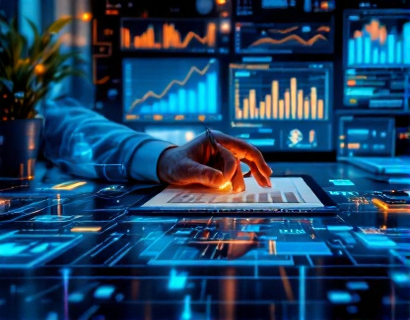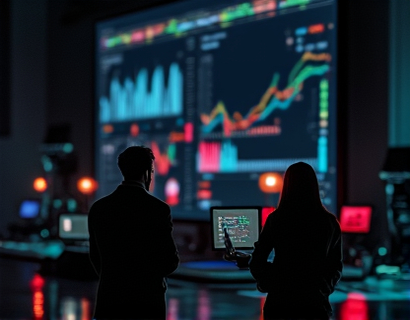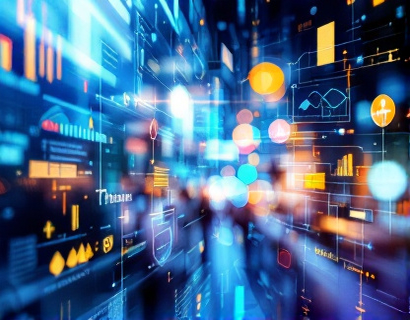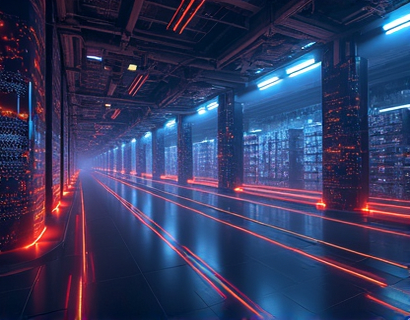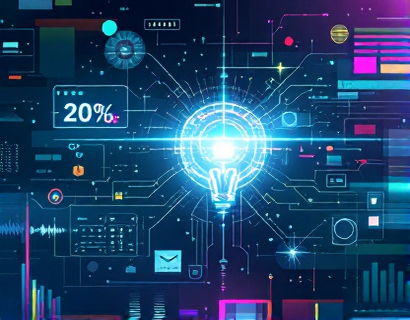Crypto and AI: Pioneering the Future of Digital Transformation
The intersection of cryptocurrency and artificial intelligence (AI) is giving rise to innovative solutions that are revolutionizing digital experiences. This convergence is not just a technological curiosity but a powerful force driving enhanced user interactions and significant growth across various sectors. As we explore this dynamic space, it's clear that the synergy between crypto and AI is reshaping how we connect, engage, and satisfy user needs in the digital realm.
Enhancing Connectivity Through Blockchain and AI
One of the most profound impacts of this fusion is in the realm of connectivity. Blockchain technology, the backbone of cryptocurrencies, offers a decentralized and secure way to connect users and devices. When combined with AI, which excels in pattern recognition and predictive analytics, the potential for creating seamless and robust networks becomes immense. For instance, AI-driven algorithms can optimize blockchain transactions, reducing latency and increasing throughput. This ensures that users experience faster and more reliable connections, which is crucial in an era where real-time interactions are the norm.
Moreover, AI can enhance the security of blockchain networks by identifying and mitigating threats more efficiently. Machine learning models can detect anomalies and potential fraud in real-time, providing a proactive defense mechanism. This not only boosts user trust but also encourages broader adoption of blockchain-based services. As connectivity becomes more seamless and secure, the foundation for a more interconnected digital world is solidified.
Personalized User Experiences with AI and Crypto
Personalization is a key driver of user satisfaction in the digital age. AI algorithms can analyze vast amounts of data to understand user preferences and behaviors, enabling highly tailored experiences. When integrated with cryptocurrency, this personalization can extend to financial services and transactions. For example, AI can predict user financial needs and suggest appropriate crypto assets or investment strategies. This level of customization not only enhances user engagement but also fosters a deeper connection with digital platforms.
Crypto assets themselves can be designed to offer personalized benefits. Through smart contracts, users can receive unique tokens or rewards based on their interactions and contributions to a platform. This gamification of user engagement not only keeps users more involved but also incentivizes positive behaviors. The combination of AI-driven insights and crypto-based rewards creates a powerful tool for building loyal user bases.
Smart Contracts: Automating Trust and Efficiency
Smart contracts, self-executing contracts with the terms directly written into code, are a prime example of how AI and crypto are transforming digital processes. These contracts automatically enforce and execute agreements when predefined conditions are met, eliminating the need for intermediaries. AI enhances this process by optimizing the conditions and outcomes of smart contracts, ensuring they are fair, efficient, and adaptable to changing circumstances.
The automation brought by smart contracts reduces transaction costs and speeds up processes, which is particularly beneficial in industries like supply chain management, real estate, and finance. For users, this means faster, more reliable, and cost-effective services. The integration of AI in managing and optimizing smart contracts further elevates these benefits, making digital transactions smoother and more trustworthy.
Enhanced Data Privacy and Security
Data privacy and security are paramount concerns in the digital world, and the combination of AI and crypto offers robust solutions. AI can enhance the encryption and decryption processes, making data more secure and less vulnerable to breaches. Additionally, AI-driven monitoring systems can continuously scan for potential security threats, providing real-time alerts and responses. This proactive approach to security is essential in building user confidence in digital platforms.
Crypto technologies, particularly zero-knowledge proofs and homomorphic encryption, further bolster data privacy. These techniques allow data to be used and analyzed without revealing sensitive information. AI can optimize the use of these privacy-preserving techniques, ensuring that user data is protected while still being leveraged for valuable insights. This dual approach of AI and crypto not only safeguards user information but also complies with stringent data protection regulations, such as GDPR.
Innovative Financial Services and DeFi
The finance sector is one of the most transformative areas where AI and crypto are converging. Decentralized Finance (DeFi) platforms leverage blockchain and AI to offer a wide range of financial services, from lending and borrowing to trading and asset management. AI algorithms can analyze market trends and user behavior to provide personalized financial advice and optimize investment strategies. This level of personalization and efficiency is unmatched in traditional finance.
Smart contracts in DeFi ensure that transactions are transparent, secure, and executed without the need for intermediaries. AI can further enhance these contracts by dynamically adjusting terms based on market conditions and user preferences. This adaptability makes DeFi more accessible and user-friendly, attracting a broader audience. The integration of AI and crypto in finance is not only innovating the way financial services are delivered but also democratizing access to these services.
User-Centric Design and AI-Driven Insights
User experience (UX) design is critical in the digital landscape, and the combination of AI and crypto is pushing the boundaries of what is possible. AI can analyze user interactions and feedback to identify pain points and areas for improvement. This data-driven approach allows for continuous refinement of digital products and services, ensuring they meet user needs and expectations. For crypto-based platforms, this means creating intuitive and seamless user interfaces that enhance the overall digital experience.
Moreover, AI can provide insights into user behavior and preferences, enabling designers to create more user-centric interfaces. For example, AI can predict which features are most likely to be used and prioritize their placement and functionality. This not only improves usability but also increases user satisfaction and retention. The synergy between AI and crypto ensures that digital platforms are not only secure and efficient but also highly user-friendly.
Challenges and Considerations
While the potential of AI and crypto in driving digital transformation is immense, there are challenges that need to be addressed. Regulatory frameworks are still evolving, and the lack of clear guidelines can pose risks for both developers and users. Ensuring compliance with regulations while leveraging the benefits of these technologies requires a careful and proactive approach. Additionally, the complexity of integrating AI and crypto systems demands skilled professionals who can navigate these technologies effectively.
Another consideration is the environmental impact of blockchain and AI. The energy consumption associated with blockchain mining and AI computations is a significant concern. Developing more efficient algorithms and exploring alternative consensus mechanisms can help mitigate these issues. The tech community is actively working on sustainable solutions, and the future looks promising in this regard.
Conclusion
The convergence of AI and crypto is ushering in a new era of digital transformation, offering innovative solutions that enhance user experiences and drive growth. From improving connectivity and personalization to automating trust and revolutionizing financial services, the potential is vast. As these technologies continue to evolve, their impact on the digital landscape will only become more profound. For tech-savvy individuals and anyone interested in the future of digital innovation, understanding this synergy is crucial. The path ahead is exciting, and the possibilities are limitless.



